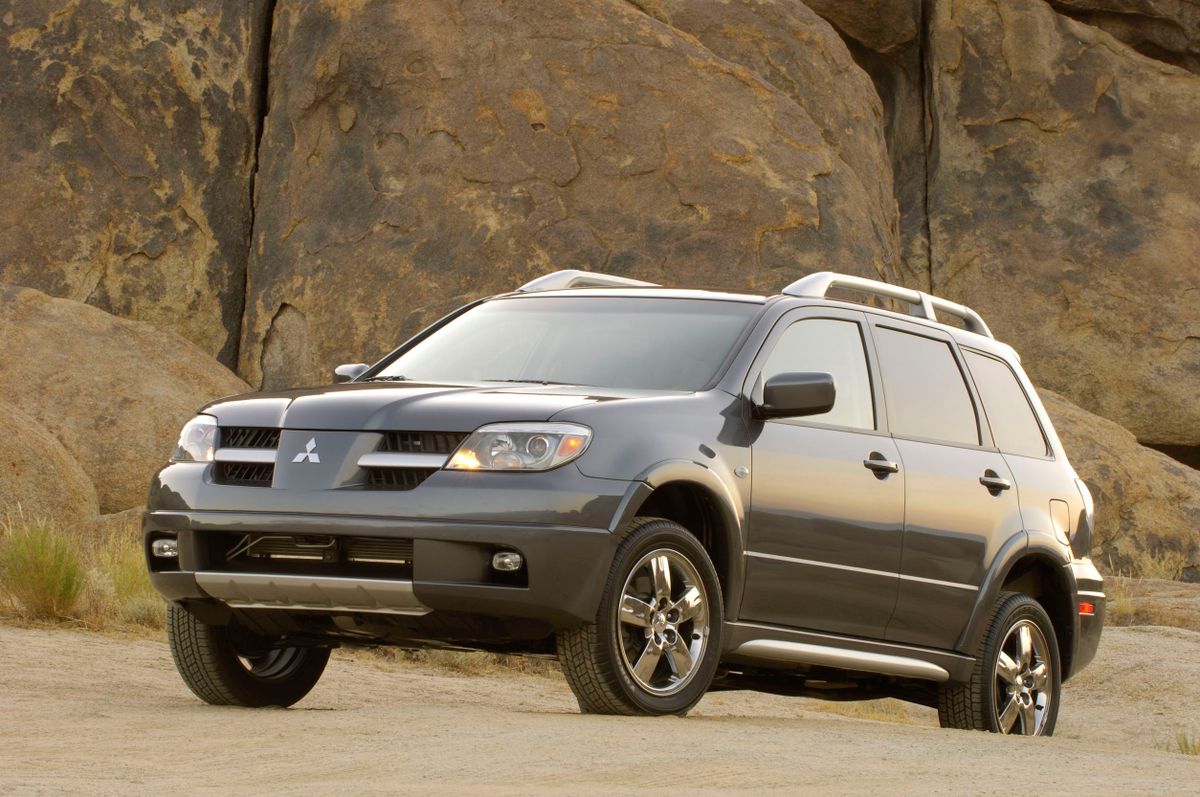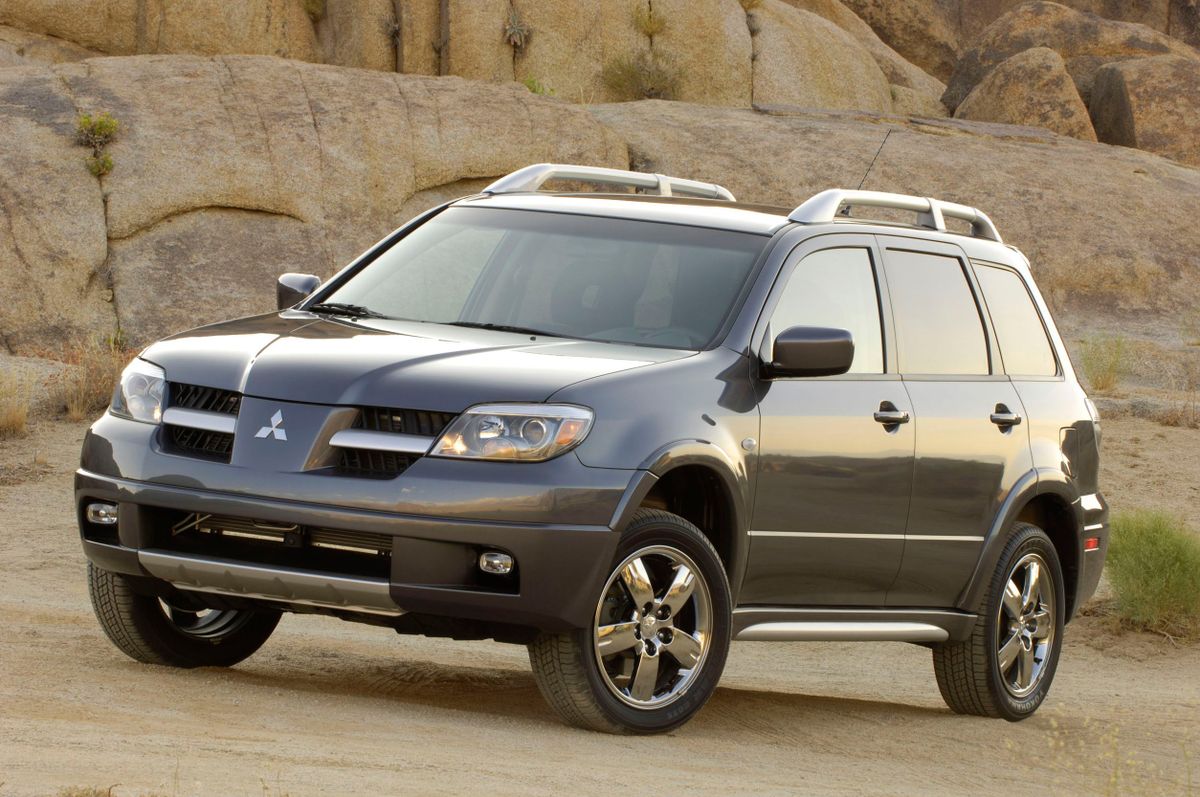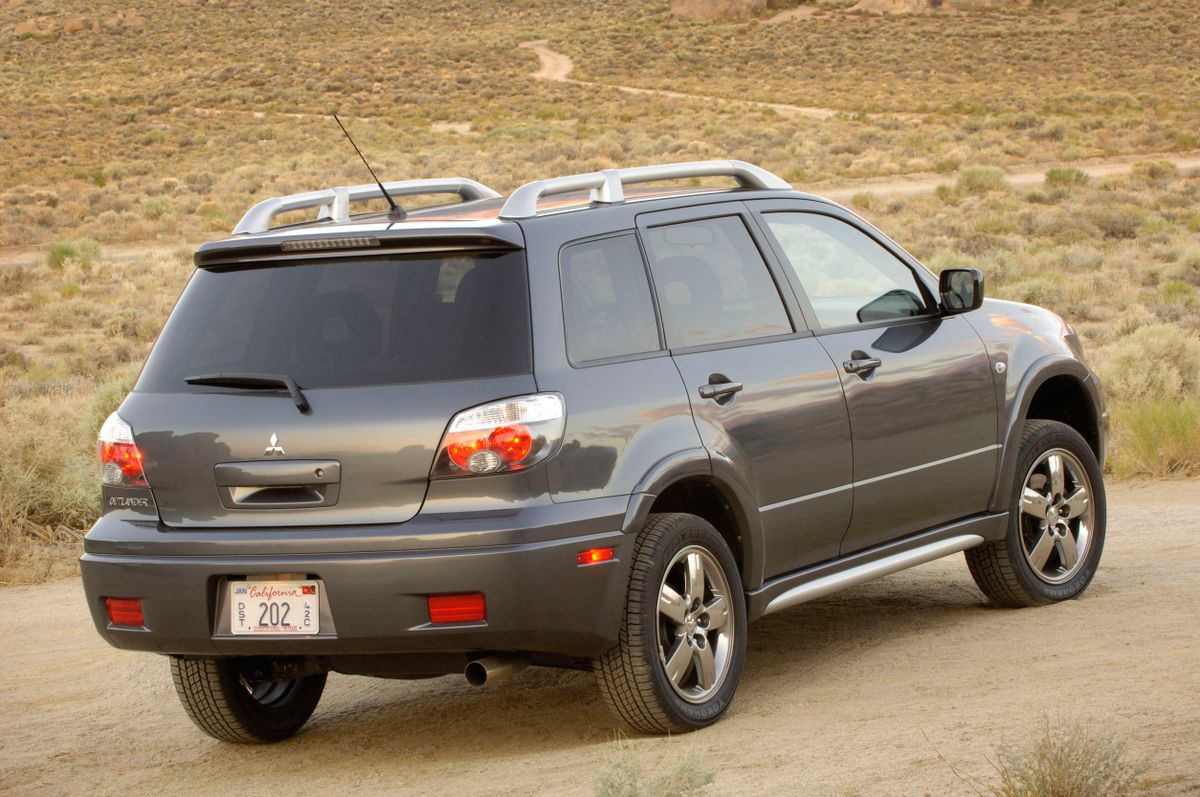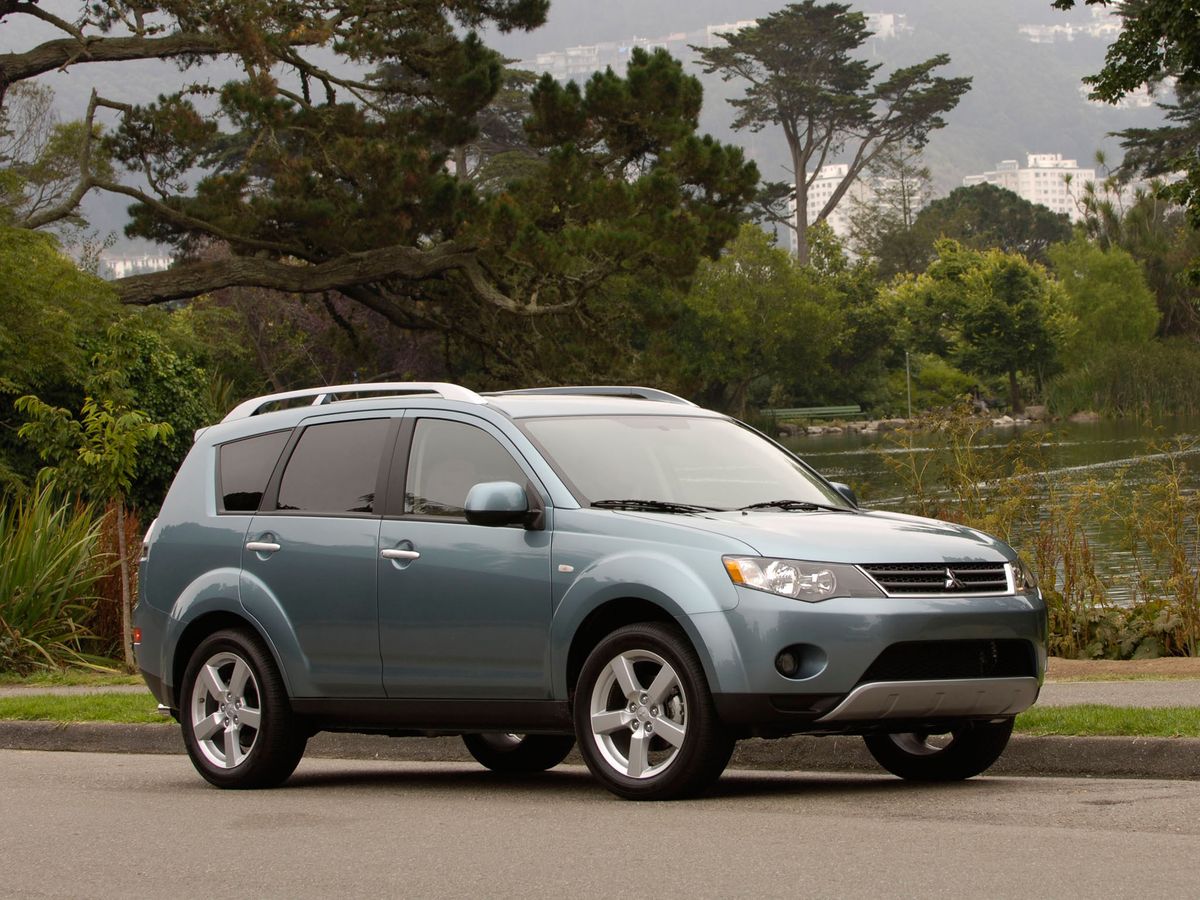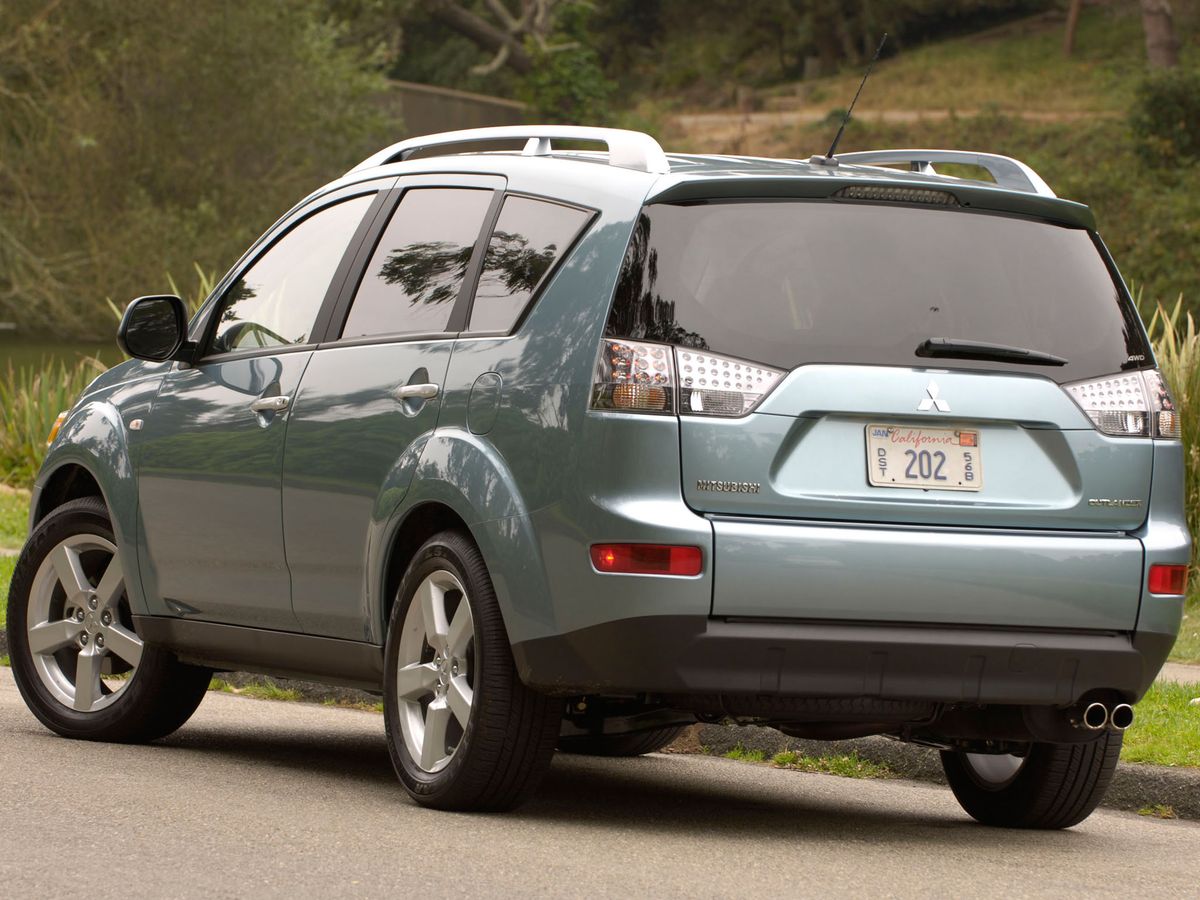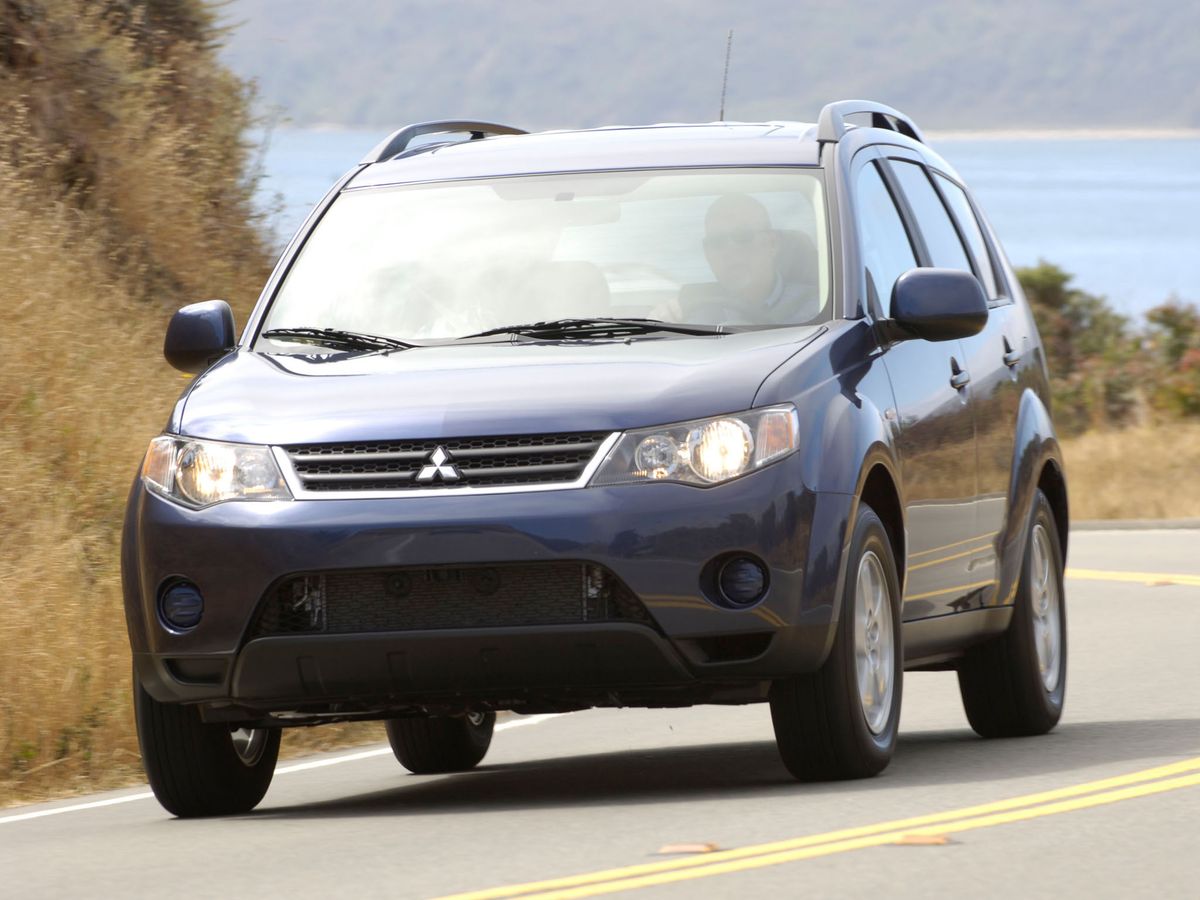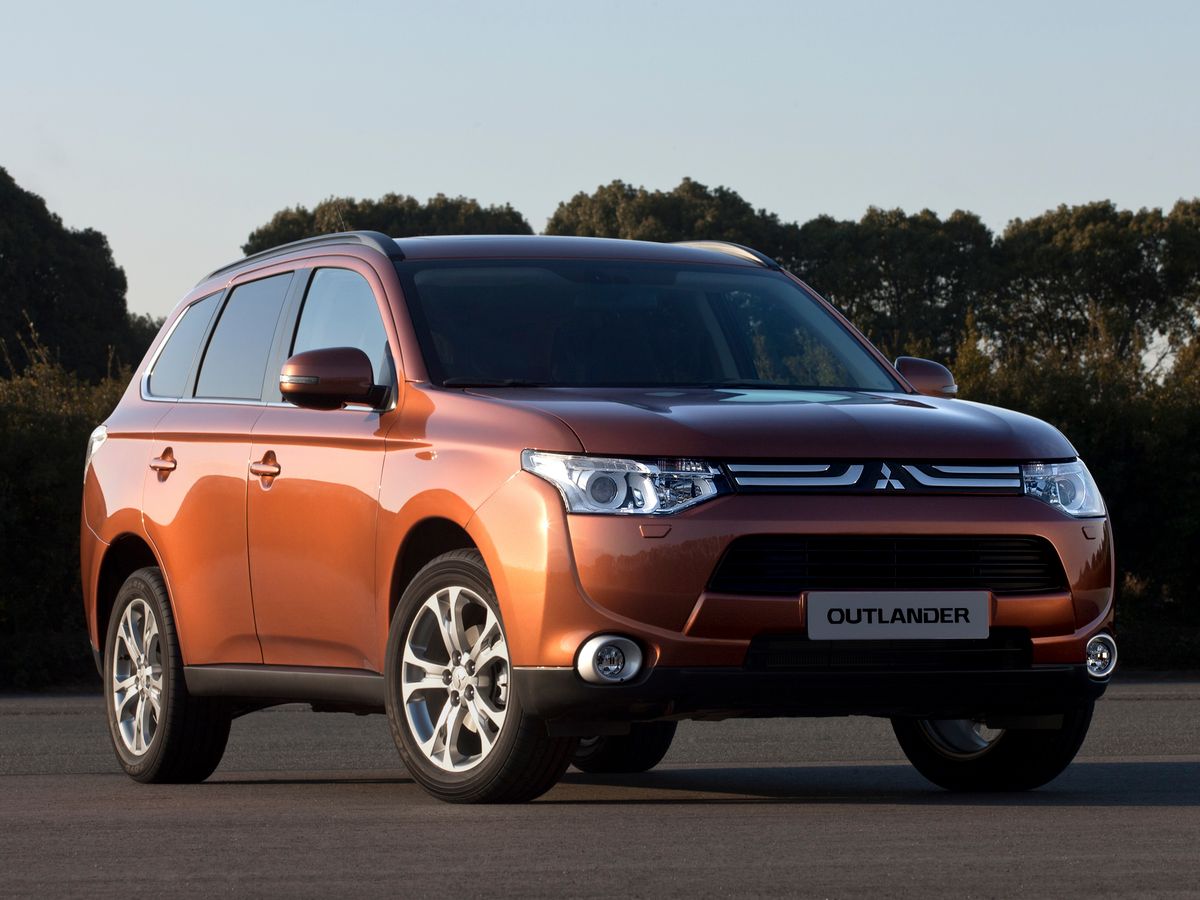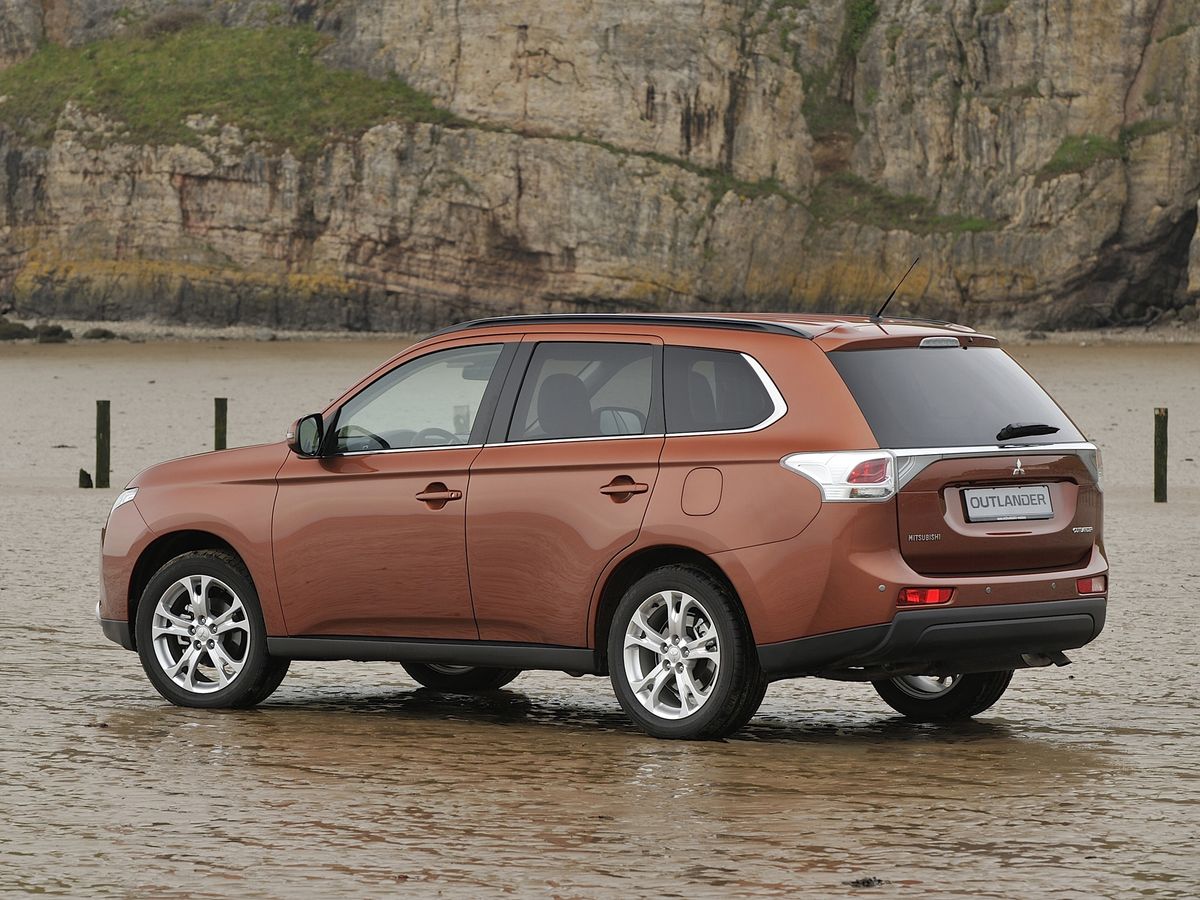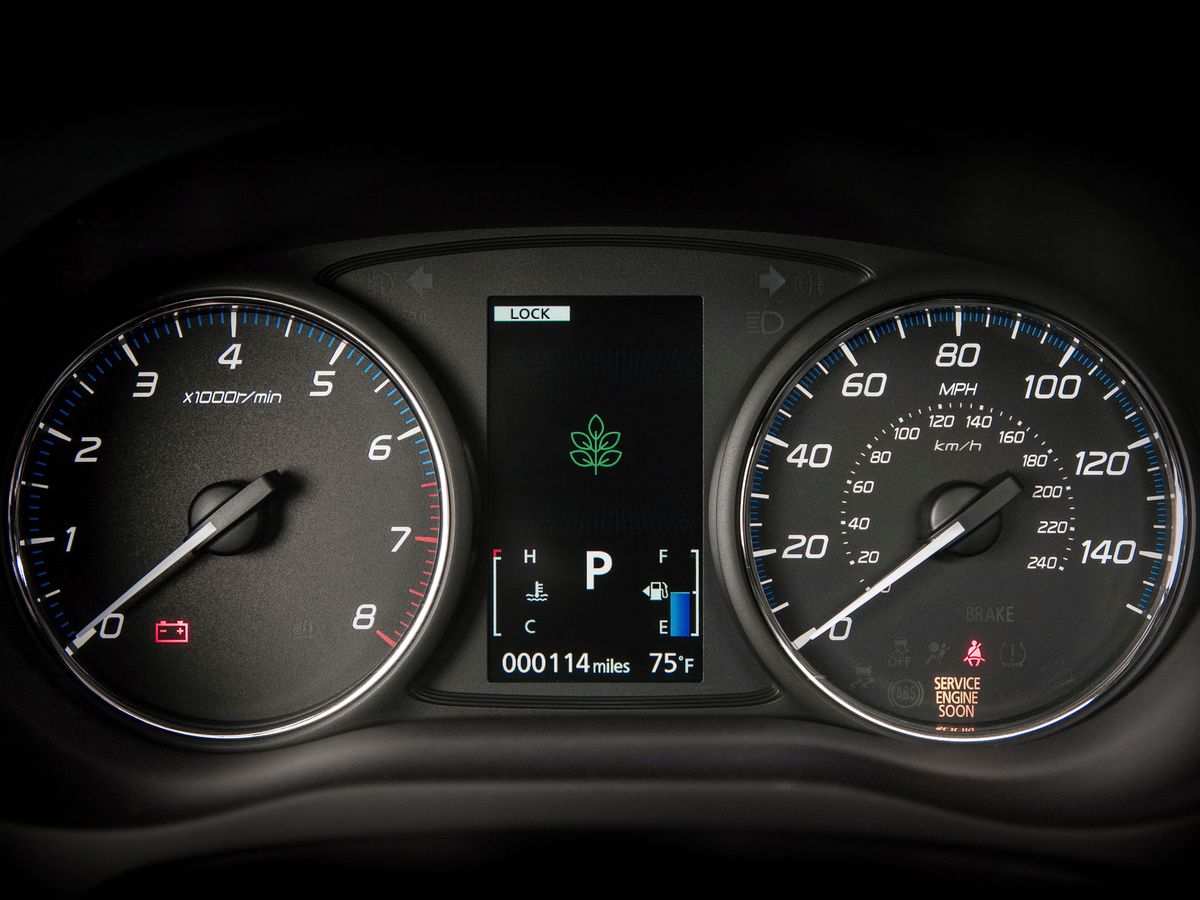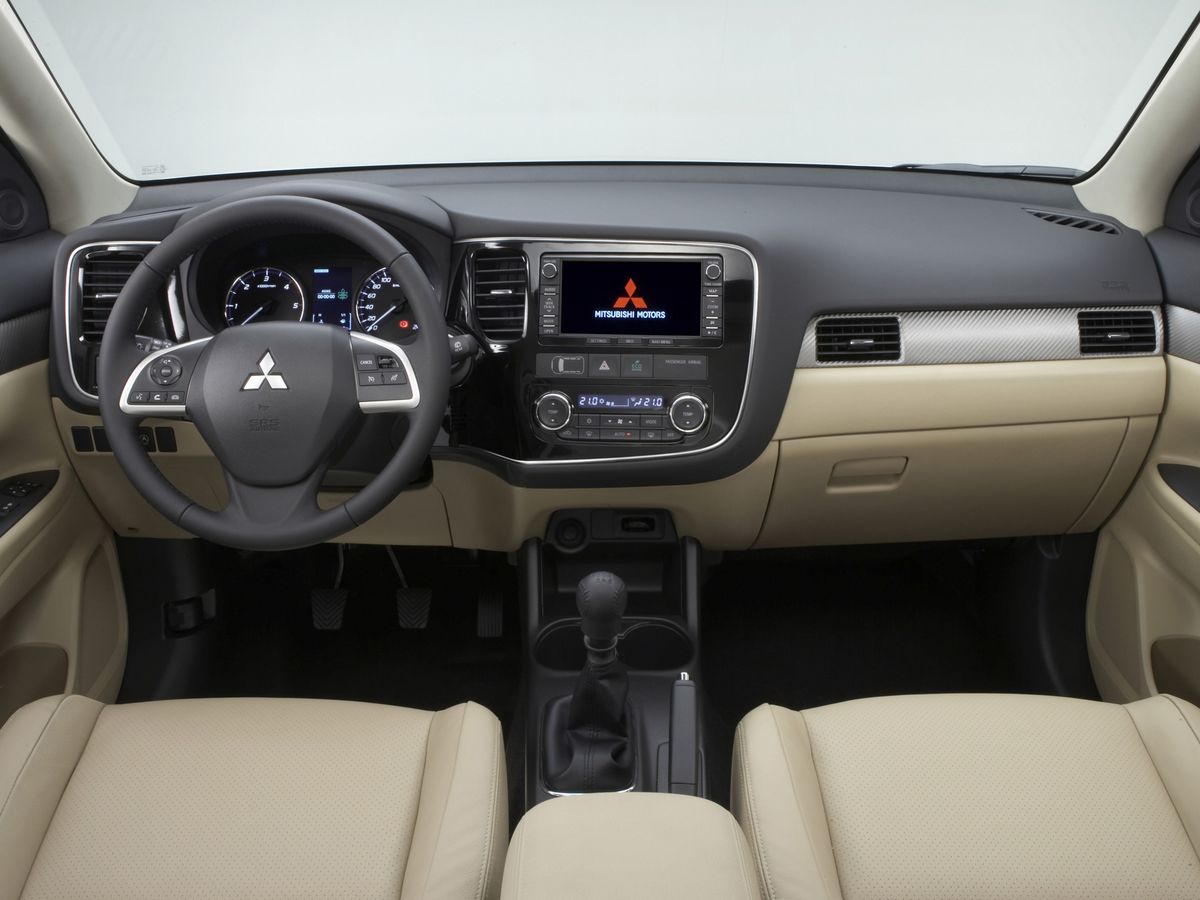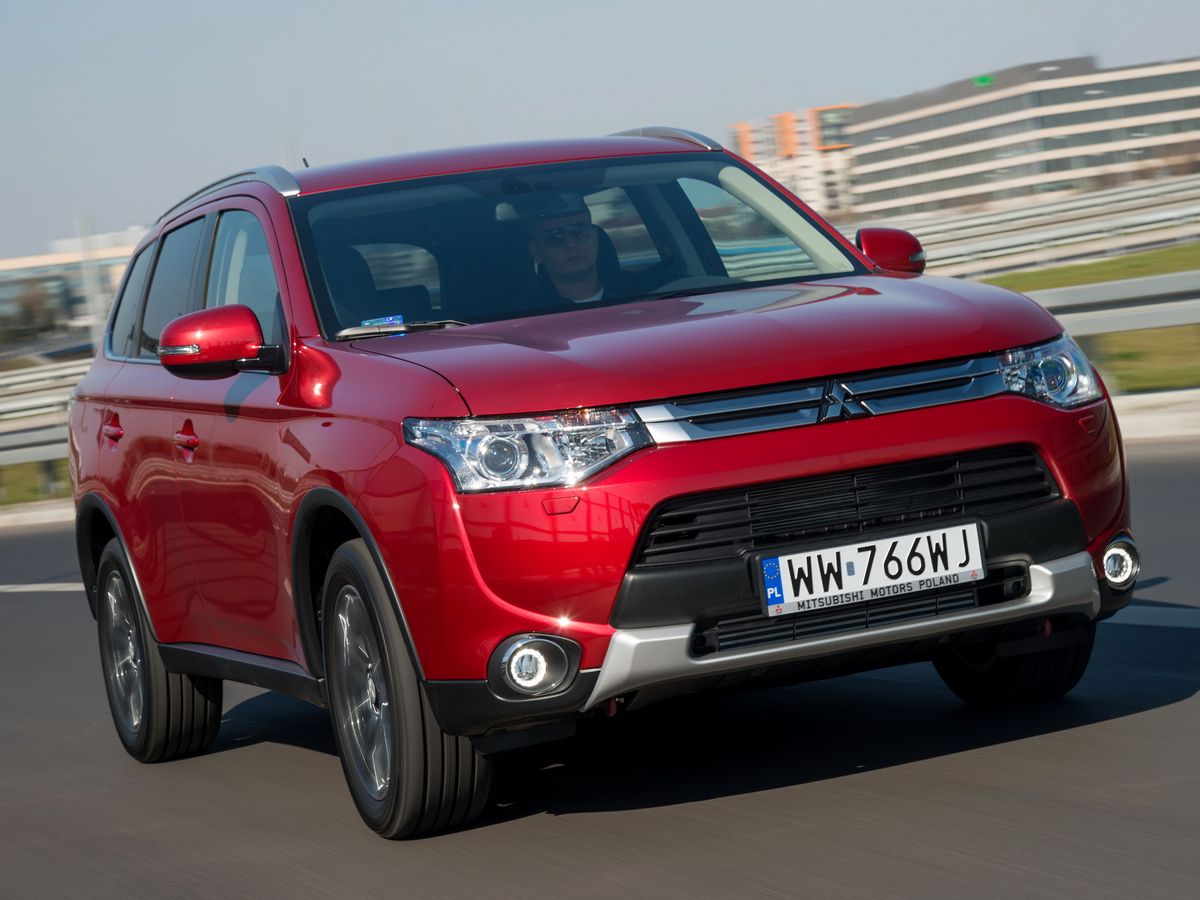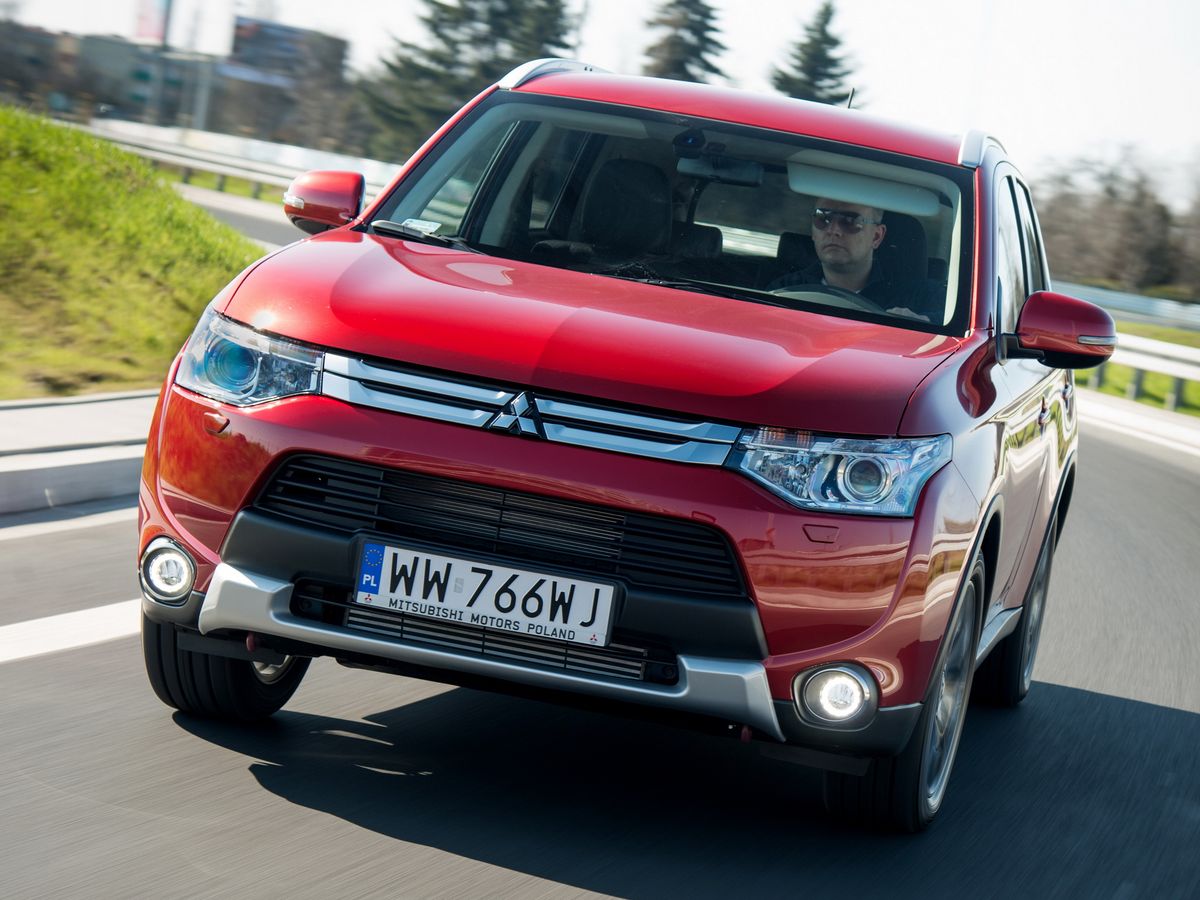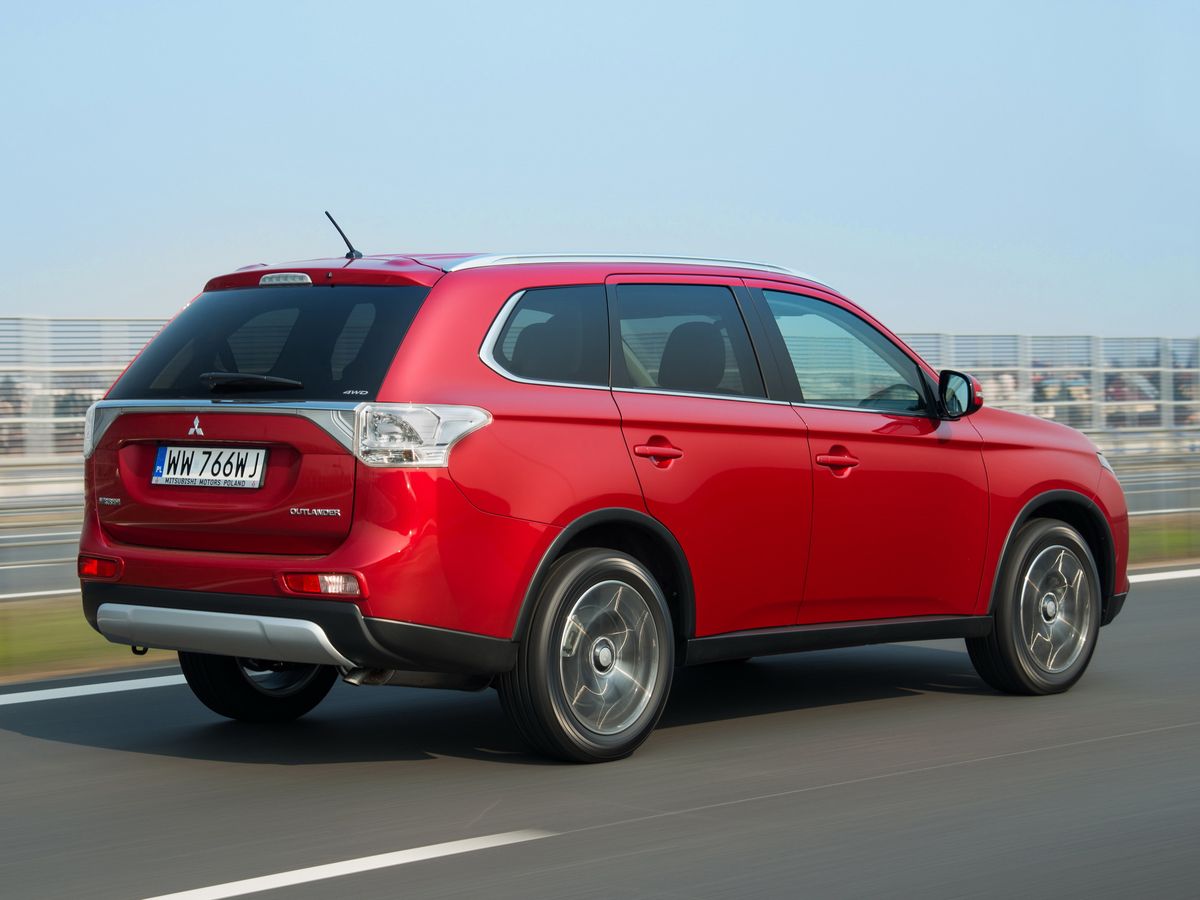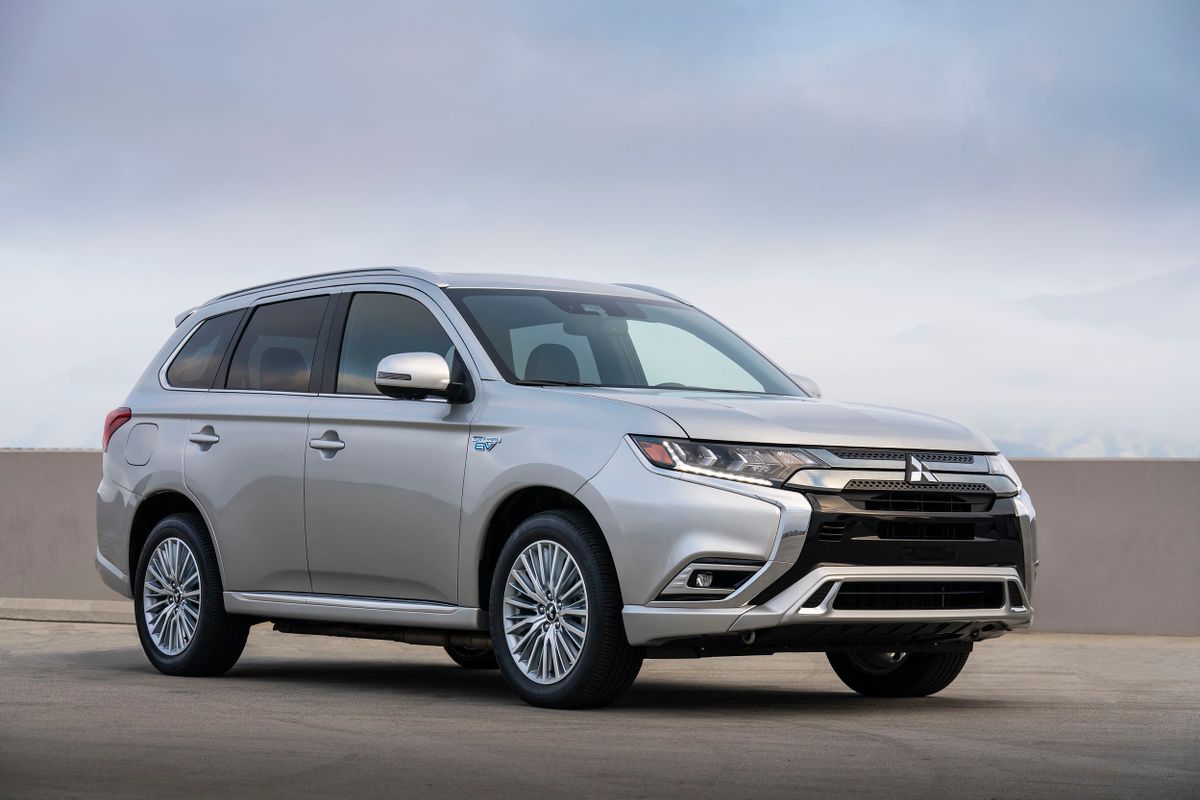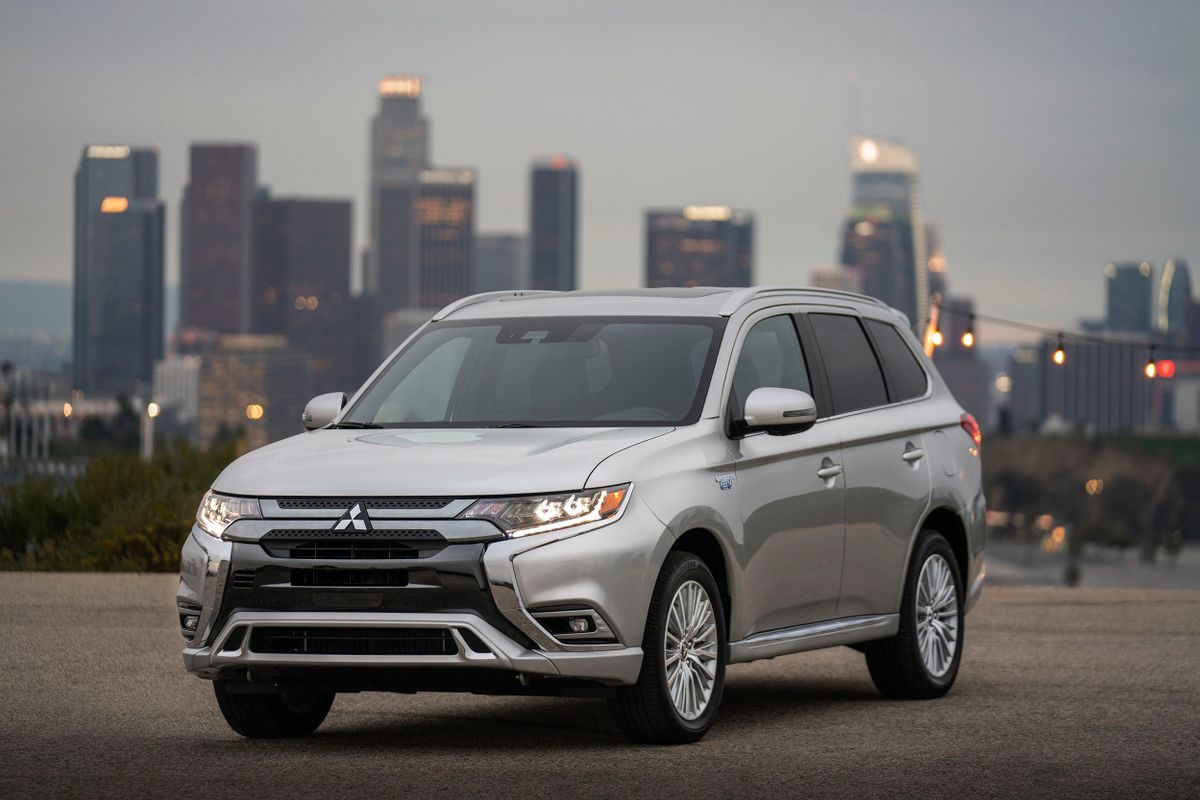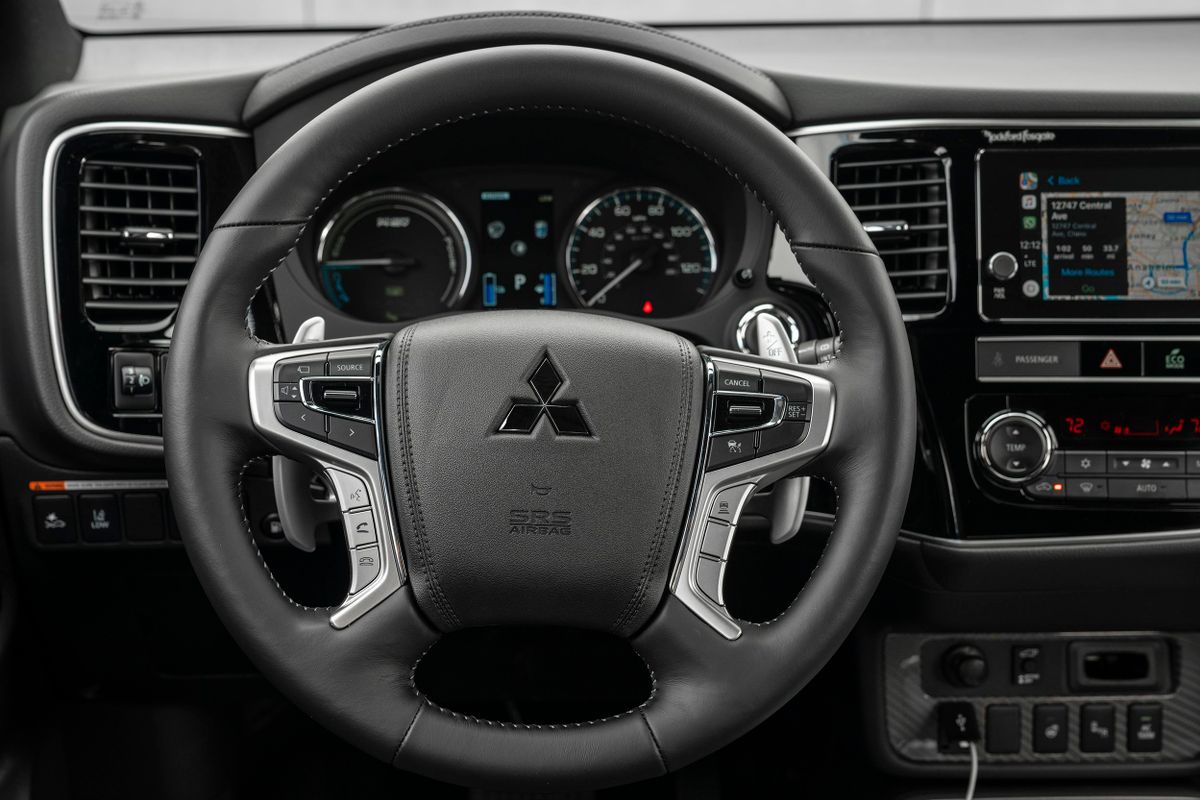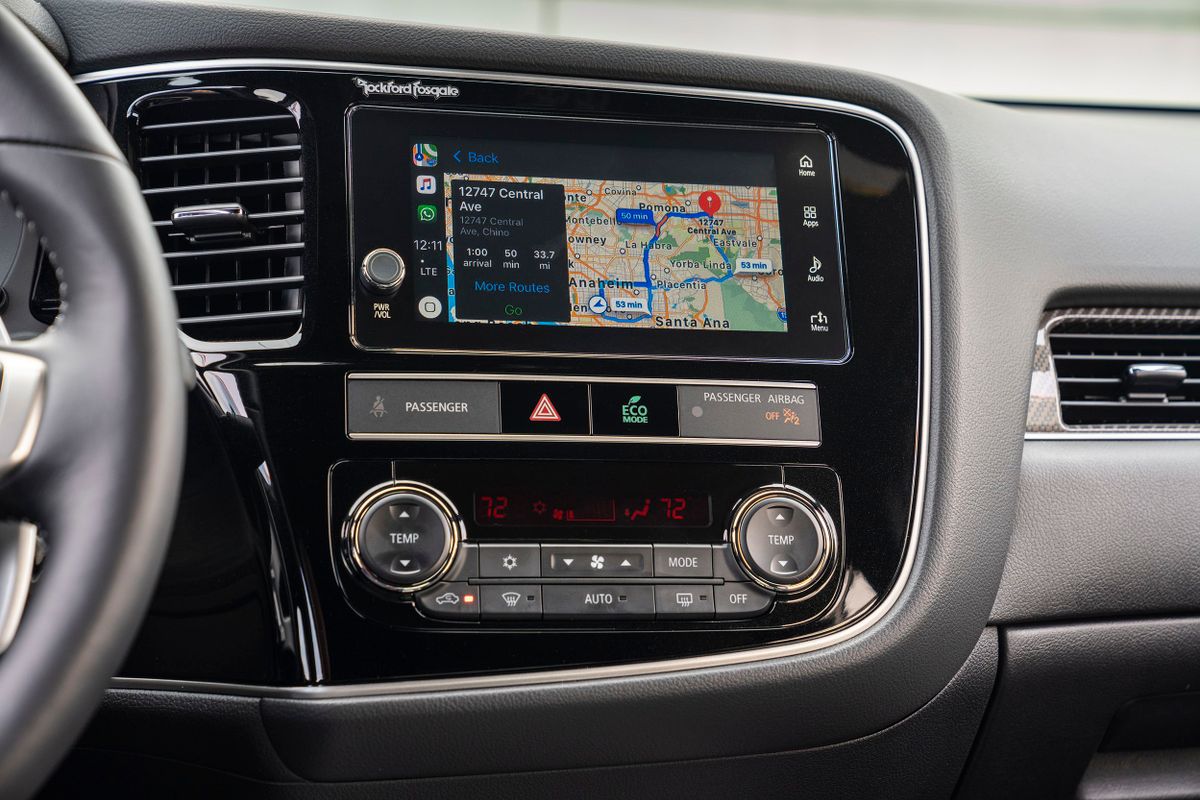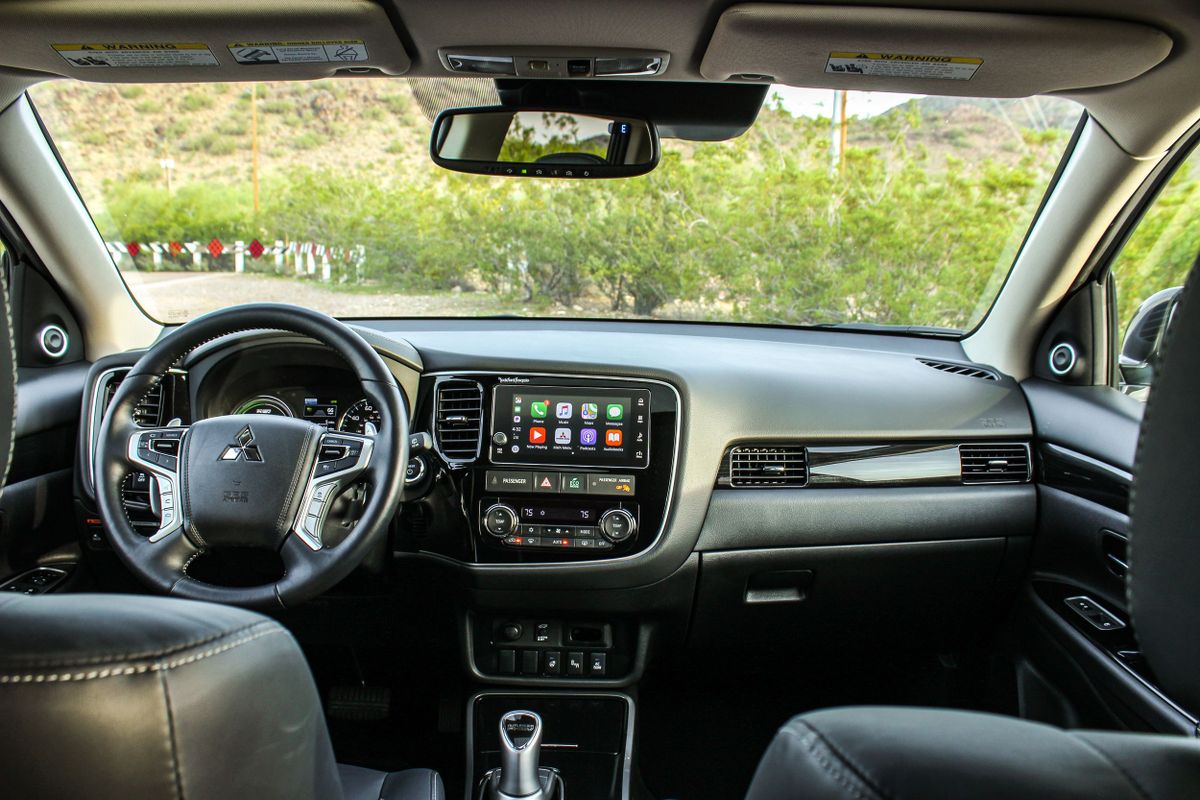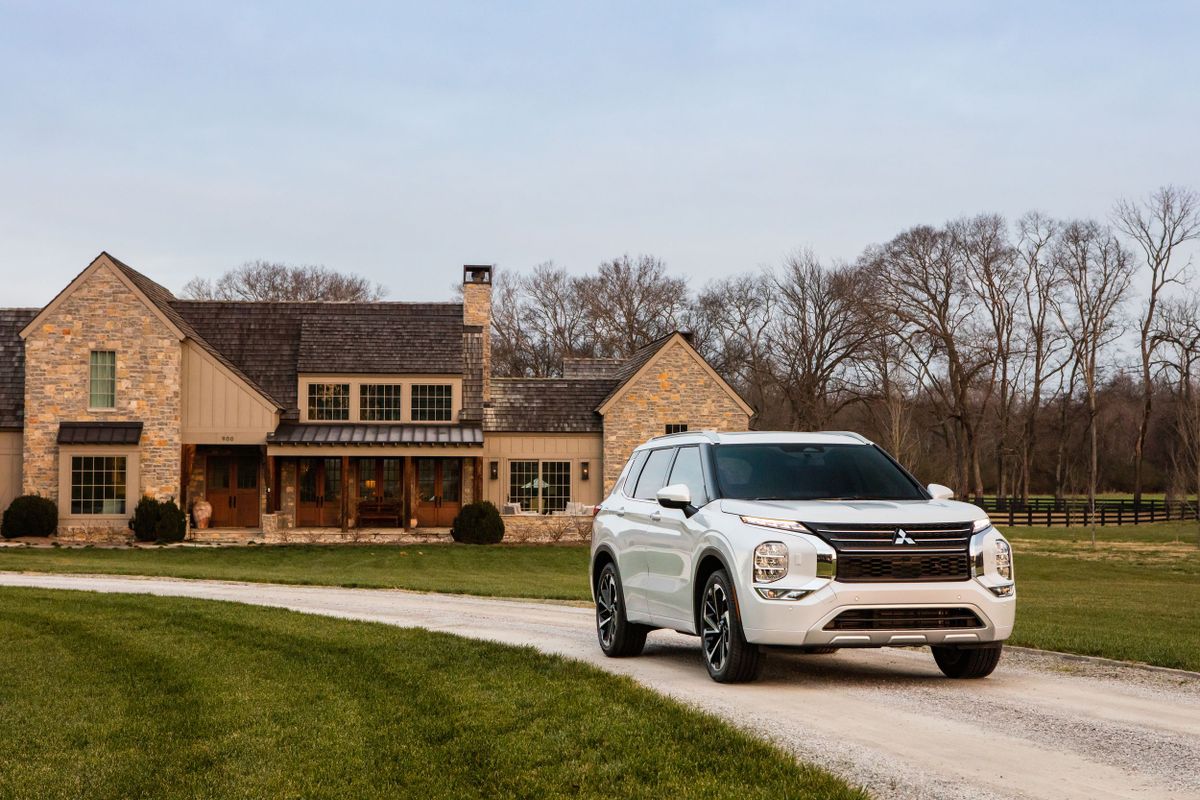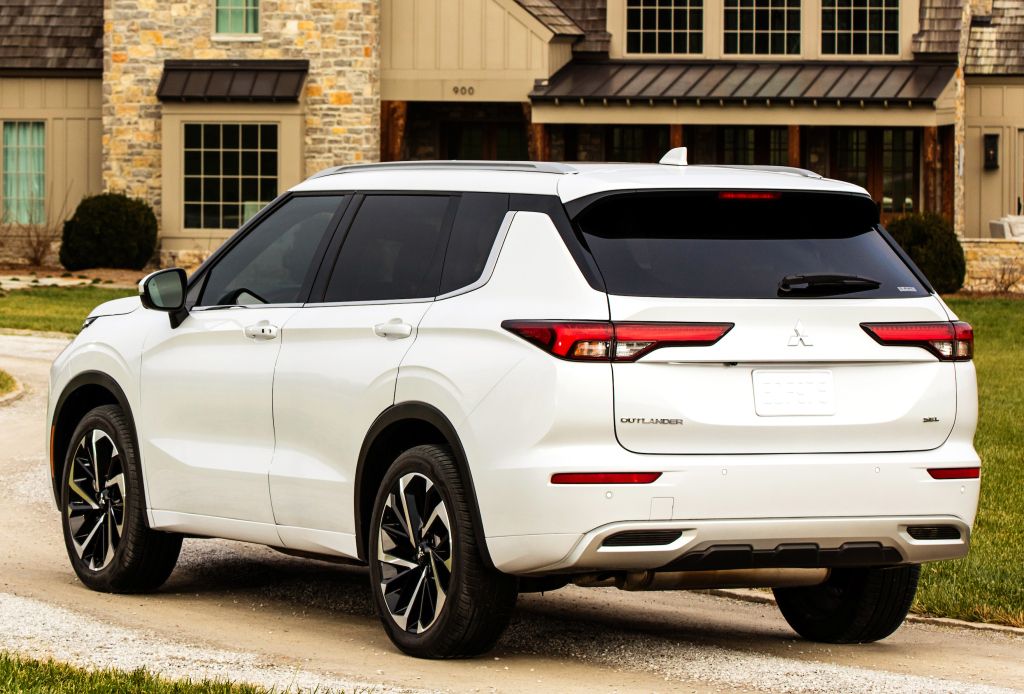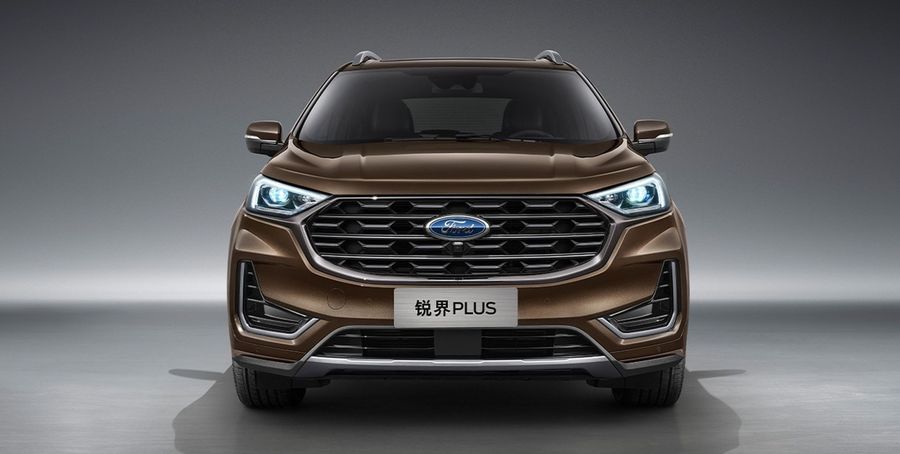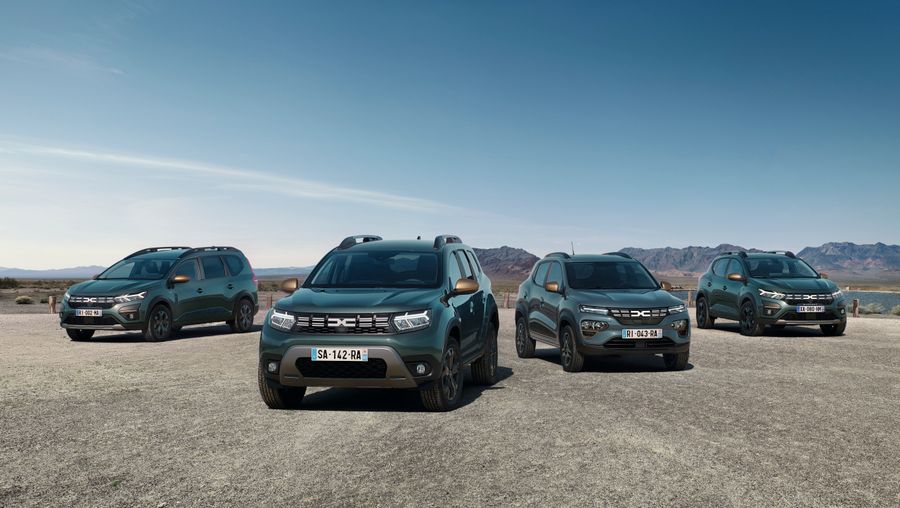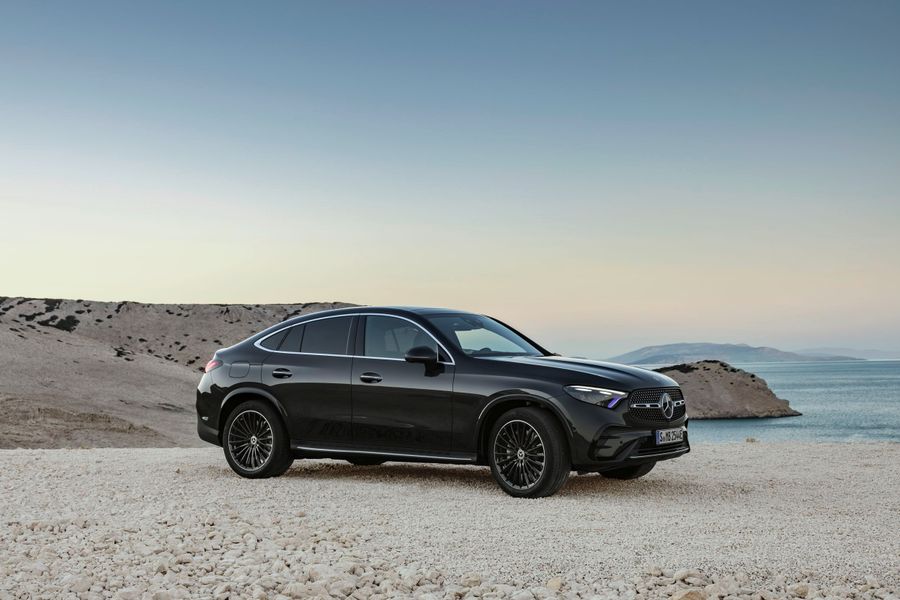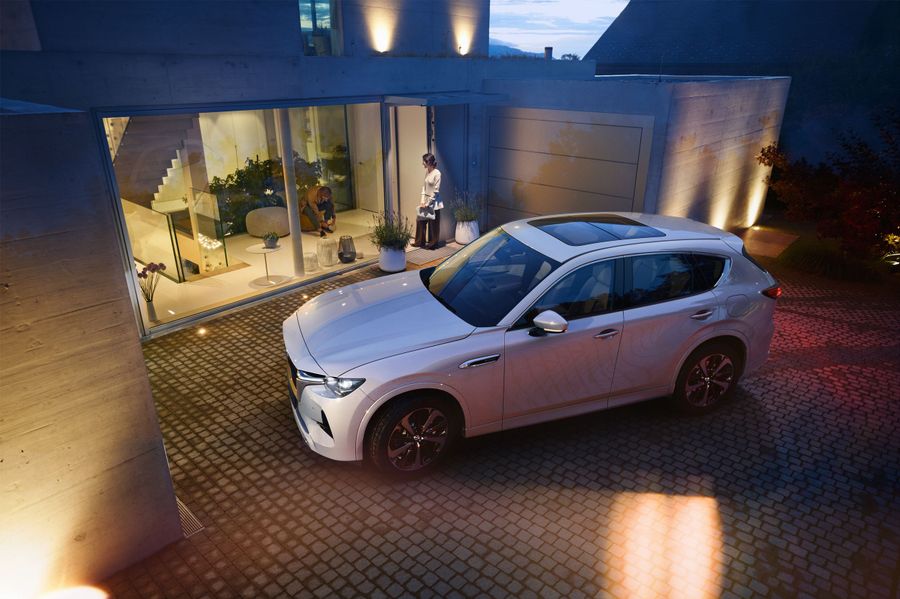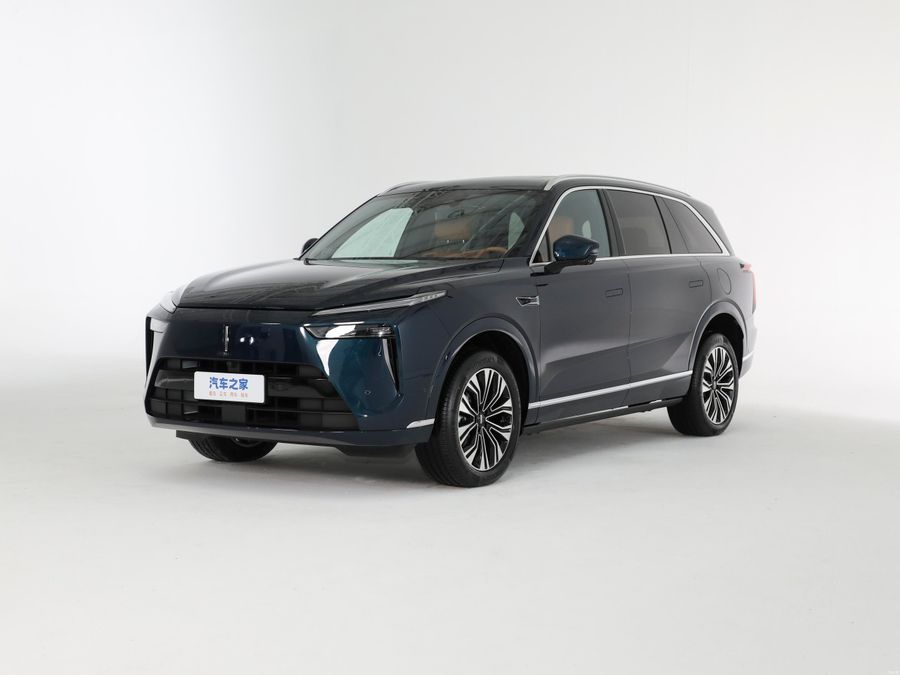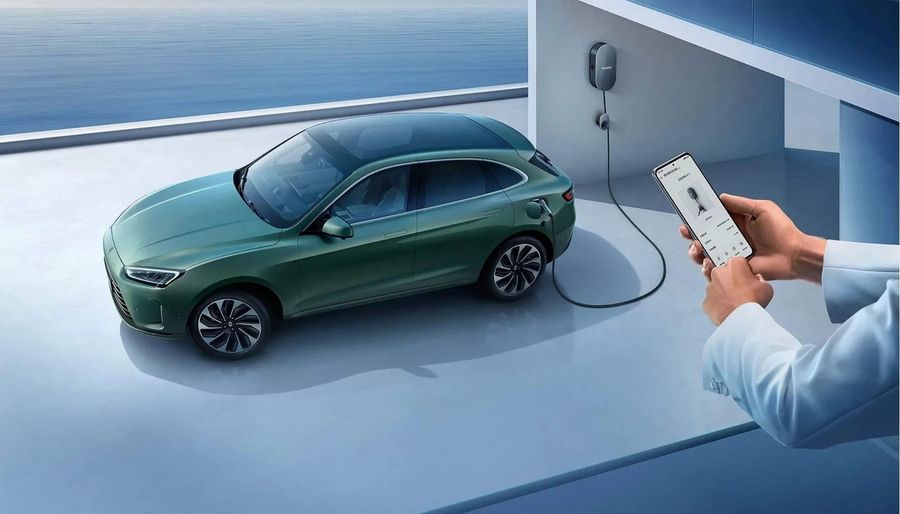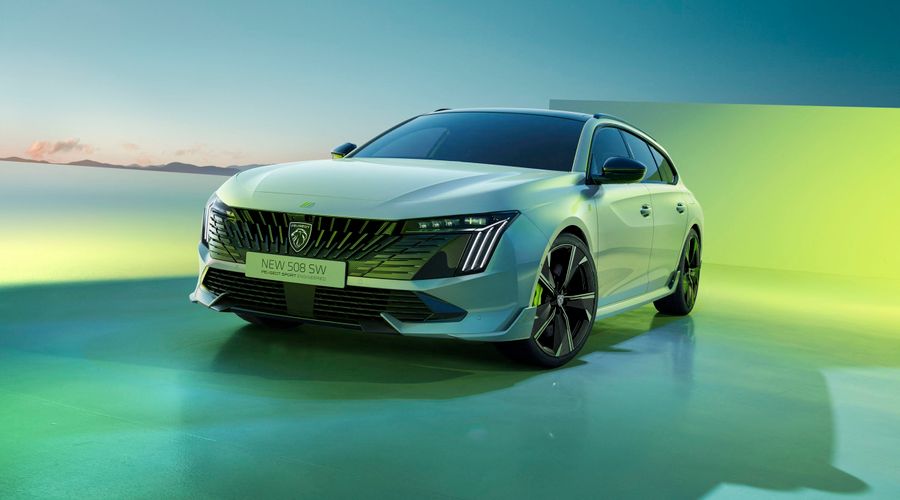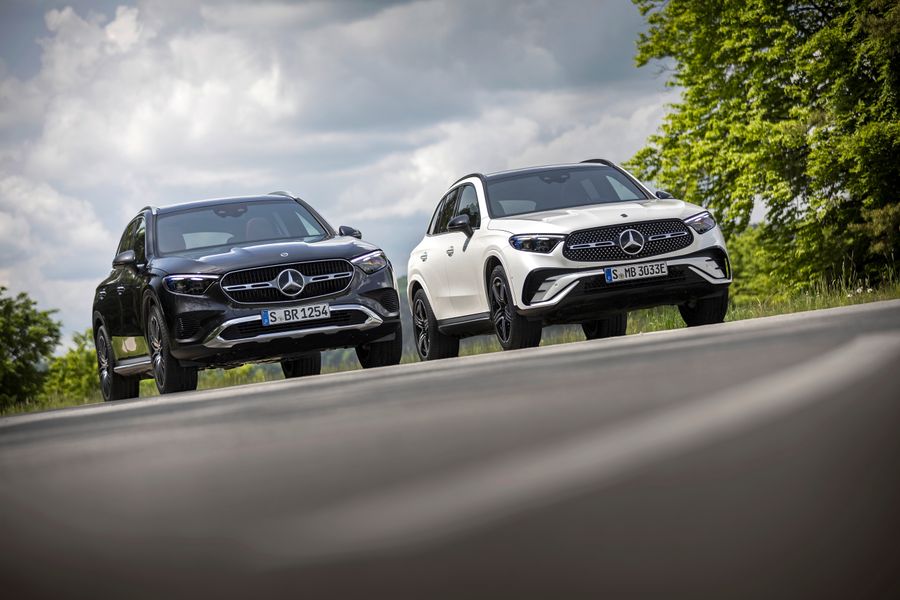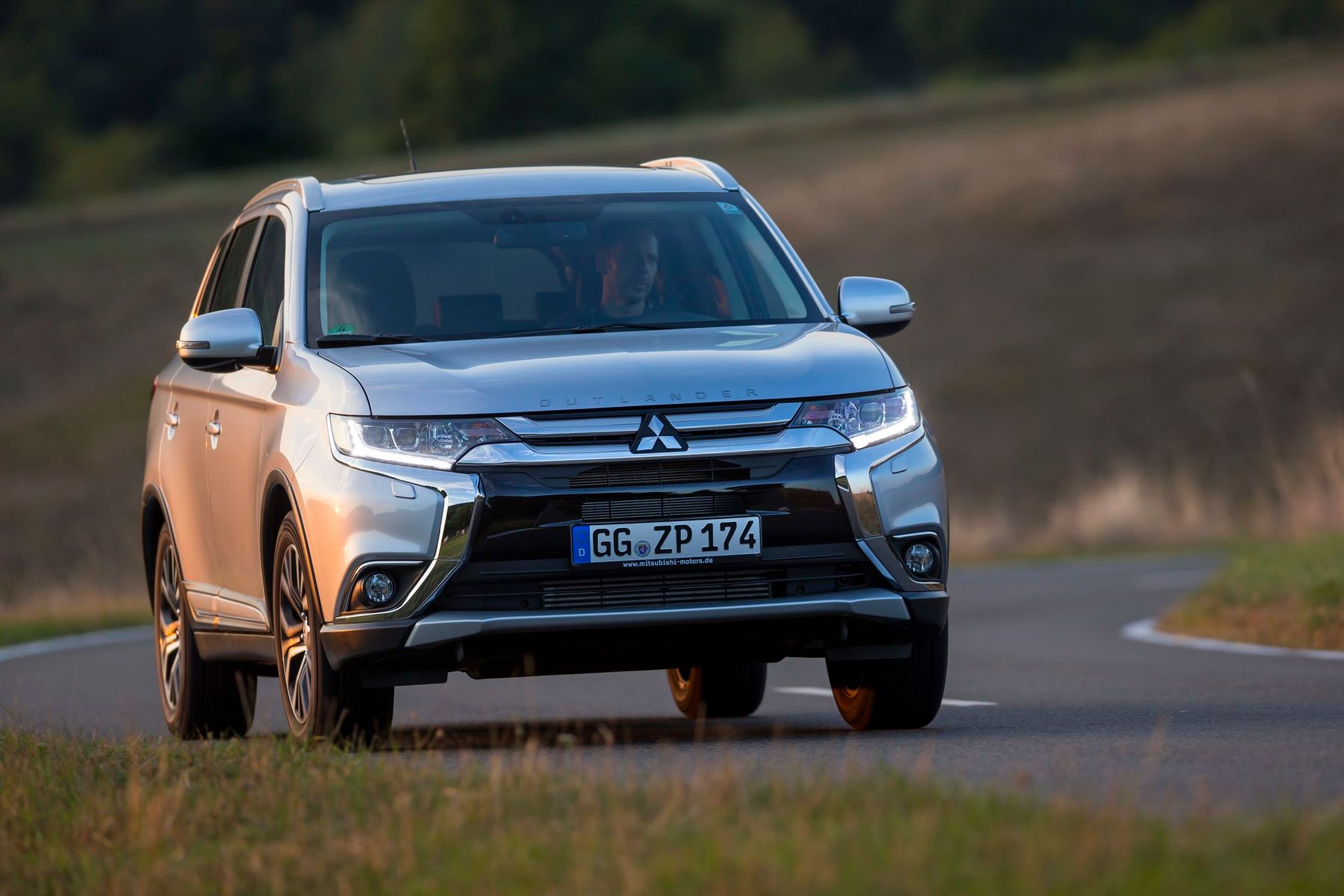
Calling you to travel
The Mitsubishi Outlander is a five- or seven-seater SUV manufactured by Mitsubishi Motors (Japan) since 2001. The car was initially sold in Japan and was called the Mitsubishi Airtrek. The model was based on the Mitsubishi ASX concept car shown at the 2001 North American International Auto Show. The beautiful name ‘Airtrek’, made up of the words ‘air’ and ‘track’ (Air and Trek), described vehicle’s ability to transport its passengers on adventure-packed journeys in a “free-as-a-bird” manner. According to the romantic Japanese, the vehicle was designed to implement the idea of “free, enjoyable, car journey”. The name “Outlander” came later, when the model was deemed worthy to travel across the globe, and it meant a focus on “traveling to distant, unexplored lands in search of adventures”.
The first generation
So, the Outlander’s ancestor, Airtrek, was first introduced on June 20, 2001 in Japan with two engines. There was a choice between a 2-liter 4G63 and a 2.4-liter 4G64 engine, both featuring four cylinders. The 2-liter engine produced 126 hp, whereas the senior engine had GDI and a power of 139 hp.
In 2002, the manufacturer introduced a 4G63T 2-liter in-line 4-cylinder engine, designed specifically for the Mitsubishi Lancer Evolution, the turbocharged version of which produced 240 hp. In 2004, the 2.4-liter engine was replaced by a new unit equipped with the variable valve timing and MIVEC valve lift system that produced 160 hp. The vehicles were equipped with a 4-speed INVECS II automatic transmission. Both front-wheel drive and all-wheel drive came with a viscous clutch in the center differential.
The vehicle featured a MacPherson strut suspension at the front and a multi-link suspension at the rear, both equipped with anti-roll bars. There were front and rear disc brakes, and the front ones were ventilated.
In 2003, the car started being supplied to North America, featuring the modified radiator grille and head optics. At the same time, the most powerful 4G69 2.4-liter MIVEC replaced the 4G64. Moreover, in 2004, the turbocharged 4G63T became available. In South America, the Outlander was also known as the Montero Outlander.
The second generation
In 2005, the manufacturer introduced the second generation, which was sold under the name Outlander. It was developed from scratch and was based on the new GS platform. The SUV had several engines, not only from Mitsubishi, but also from Volkswagen and PSA Peugeot Citroën. The Citroen C-Crosser and Peugeot 4007 were the Outlander’s copies with modified bodies. They were presented at the 2007 Geneva Motor Show.
The second generation vehicle comprised a number of progressive technologies, including a more rigid and lighter body, a new platform, the new layout of soundproofing materials, ensuring silence and comfort. The roof featured aluminum panels for lighter weight and a lower center of gravity. The second generation SUV had modifications with three rows of seats. The seven-seater version differed from the five-seater Outlander by the presence of two folding seats, hidden in the trunk compartment underfloor space.
The name ‘Outlander’ meant a focus on ‘traveling to distant, unexplored lands in search of adventures’.
Another innovation was the CVT (continuously variable transmission), which was installed on the version with MIVEC 2.4-liter engines. In 2007, the vehicle acquired a three-liter V6 MIVEC engine in combination with a 6-speed automatic transmission with a sports mode and paddle shifters, which was removed two years later for the sake of ecology. In 2009, the CVT was upgraded, becoming more fuel-efficient. In the struggle for air purity, the vehicle also lost the most common 2.4 liter engine in January 2010. It was replaced by a more fuel-efficient 2-liter engine. The 2.4 liter engine remained only on all-wheel drive models.
The chassis remained the same, but the power steering was upgraded, which improved the vehicle’s behavior at medium and high speeds. The SUV’s safety equipment in the top-end version included six airbags, ABS (anti-lock braking), BAS (brake assist system), ESP (electronic stability program), TCS (traction control system), adaptive front-lighting system (AFS), as well as a rear view camera and a parking radar.
The third generation
The new generation was presented at the 2012 Geneva Motor Show, and its sales began at the end of 2013. The vehicle was built on a new platform and acquired new 2.0-liter and 2.4-liter engines with 150 and 169 hp. Both engines are aggregated by the INVECS-III continuously variable transmission, which in some versions supports the 6-speed sports mode of the CVT.
Hybrid
Like the previous generation, three-row seating versions were available in Japan. In the same 2012, they announced the possible appearance of a hybrid that could be powered by electricity in conjunction with a petrol engine and would be able to drive up to 50 km in the electric mode.
It was named Mitsubishi Outlander PHEV and went on sale in January 2013. The hybrid uses Twin Motor 4WD permanent all-electric drive, a system that includes two independent electric motors to drive the front and rear wheels. In addition, due to the reduced frictional losses, Twin Motor 4WD provides better response and more precise control compared to conventional mechanical systems.
The Outlander PHEV primarily works in a fully electric mode. The buttons next to the transmission joystick are designed to switch the vehicle to the hybrid mode, either to conserve battery power or to force recharge. However, the electronics itself, depending on the driving conditions and the level of the remaining battery charge, automatically selects the optimal operating mode for a comfortable journey, while ensuring excellent fuel efficiency. The 12-kilowatt lithium-ion battery provides a 55 km drive range. The total drive range is about 900 km.
Equipment
The entry-level Mitsubishi Outlander comes standard with xenon headlights, fog lights, factory-tinted glass, remote control key and push button start, climate control, a large touchscreen display, side and rear view cameras. The list of options includes electric sunroof, leather trim, electric heated front seats, electric tailgate, and Rockford Fosgate premium sound system. The third row seats have become 120 mm wider and are equipped with a 4-position tilting mechanism. Plus, the legroom has increased and it has become more convenient to get in and out of the vehicle.
The SUV came standard with seven airbags, anti-lock braking system, brake force distribution, traction control, and electronic stability program. The expensive trim levels offered adaptive cruise control and lane departure warning system. The new RISE body provided increased crash safety.
2014 restyling
The Japanese decided that it was time for restyling and designed the face of the SUV in the Jet Fighter style. The changes touched the exterior. The vehicle started featuring redesigned front and rear bumpers, new radiator grille, arch extensions, new optics, LEDs and new 18-inch wheels.
In addition to exterior changes, the SUV could boast of better sound insulation due to a thicker layer of materials on the floor, in the front wheel arches and under the hood. The more expensive trim levels featured a heated wiper zone and an electric rear door. Importantly, there was a CVT cooling system, which was removed in 2012. The suspension was also reconfigured: the shock absorbers became stiffer and acquired springs, which were triggered during the rebound and removed the rolling.
2018 restyling
The restyled SUV acquired a new front face designed in accordance with the Dynamic Shield design style, new bumpers, improved LED running lights and new rims. The rear spoiler became larger and was included in the top-end trim levels. In addition, the SUV’s suspension and steering settings were changed again. The vehicle is 4,695 mm long, 1,810 mm wide and 1,680 mm high. The declared ground clearance is 215 mm. The wheelbase is 2,670 mm and the turning radius is 5.3 meters.
Interior
The 2018/2019 Mitsubishi Outlander traditionally has good rear legroom and headroom. The rear seats are tilt-adjustable. The volume of the trunk is 477/591 liters, depending on the modification, and the maximum volume is 1,608/1,754 liters. The seven-seater version has the second row with sliding seats for easy access and exit from the third row.
The interior features air ducts for rear passengers (in the 4WD version) and a USB connector for recharging, a new lateral support profile for the seats, and improved noise isolation. The interior also pleases with higher quality, new decorative inserts on the center console. Just like in the previous generations, both five- and seven-seater versions are available.
Powertrains
The engine list remains the same. It includes petrol units, including 2-liter and 2.4-liter four-cylinder engines, as well as a 3-liter V6 engine. Israeli buyers can choose from two options of powertrains: a two-liter petrol engine or a hybrid, based on a 2.4-liter engine plus an electric motor for each axle, so the hybrid vehicle is all-wheel drive. The two-liter SUV can be front-wheel drive.
Equipment
First of all, the 2018/2019 SUV features the air ducts for the rear passengers. The list of options of the expensive versions include dual-zone climate control, keyless entry and push button start, electric fifth door, automatic low/high beam switching, all-round cameras and blind spot monitoring system, rear collision warning system, lane departure warning system and active cruise control, which stops the car when obstacles ahead are detected. There are six trim levels for the petrol version, and three for the Outlander hybrid.
The fourth generation, February 2021
The fourth generation Mitsubishi Outlander has been switched to the modular CMF-C/D platform by the Renault-Nissan Alliance, which delayed the release of the new vehicle. Technically, the new Outlander has become a copy of the Nissan X-Trail, which is currently only available in America. They now have the same platform with a multi-link rear suspension and a similar body structure with a high proportion of ultra-high-strength steels. And the engine is also from Nissan (2.5-liter, 181 hp), whereas the CVT by Jatco has eight fixed gears. All-wheel drive transmission features a clutch on the rear axle.
The vehicle is noticeably larger than the previous one. Thus, it has become 88 mm wider (1,897 mm) and 38 mm higher (1,748 mm). The design is made in the corporate Dynamic Shield style, which is already well known to everyone. The main headlights are located in a massive bumper around the edges, and horizontal running lights shine above them.
The interior is completely new, featuring better quality finishing materials, the transmission controlled by a joystick, an 8 or 9-inch media system controlled by a touch screen (depending on the trim level). The trim levels come with analog devices with a seven-inch screen between the scales, while the expensive versions have a 12.3-inch display.
In the USA, where the new vehicle will soon go on sale, the new Mitsubishi SUV will have a seven-seater interior, although other markets will probable offer an optional third-row seating version. The second row in this case will have a longitudinal adjustment and a backrest, divided in a ratio of 40:20:40. The vehicle can have up to eleven airbags and adaptive cruise control with lane keeping function, MI-Pilot Assist, very similar to Nissan’s ProPilot system. As for high technologies, we note the development of the PHEV hybrid version.


